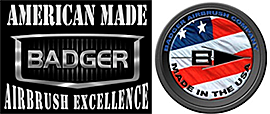
The Aviator sunglasses Ray-Ban is famous for were first developed for pilots in the war. However, there’s an additional, little-known part to that story. In the First World War, pilots used full goggles to protect their eyes from the wind and the cold in their open cockpits. As aircraft technology advanced and planes reached higher and higher altitudes, goggles eventually became unsuitable because they would freeze over and couldn’t protect against the glare of the sun in the higher atmosphere, causing headache and altitude sickness.
Some history on the Ray Ban shades

In 1920, legendary test pilot “Shorty” Schroeder took a biplane to an altitude of 33,000 ft – 40,000 ft above Mt. Everest and had to remove his goggles in-flight, as they got covered in ice. Within seconds, his vision blurred as his exposed eyes also froze over in the extreme cold. He managed to land, but this experience prompted his fellow test pilot John MacReady to start designing sunglasses for high-altitude conditions. Working with Bausch & Lomb, he eventually came up with the tinted glasses that would become the grandfather of the Aviator.
Thanks to the advent of closed cockpits temperature and wind ceased to be an issue. The goggle design could be abandoned, allowing for attractive as well as a practical shades. The prototype was named “Anti-Glare.” The brand name of the eventual 1937 civilian model, however, came from the description of what Ray-Ban was able to do: it banished sunrays.

The Aviator became a hit both with the military and the public. During the war, French pilots and American G.I.s wore them just as enthusiastically as U.S. airmen. The sunglasses got an additional boost of fame from General Douglas MacArthur when he landed in the Philippines wearing them, and incorporated them into his signature look with his corncob pipe and hat.

What most people don’t realize, however, is that Ray-Ban was neither the only, nor the first pair of aviator glasses. In fact, it’s been argued that no aviators actually wore Ray-Ban in the war, since that was just the civilian brand. The military glasses actually continued to be produced under the name of the parent company Bausch & Lomb. The first pair of sunglasses contracted by the US Army Air Corps was in fact the “D-1” by American Optical, which was standardized in 1935, a year before the prototype Aviator was made. In turn, the still D-1 looks very much like the “Auto-Glas” glasses of 1911, which already had tinted lenses and a shape remarkably similar to later aviator glasses.

The ultimate ancestor of the aviator shades, however, predates even that. From 1891, we have the Warren Eye Guard, a set of protective shades made not of glass, but a mineral called mica, and already showed the beginnings of the classic aviator glasses that became a popular hit half a century later.































